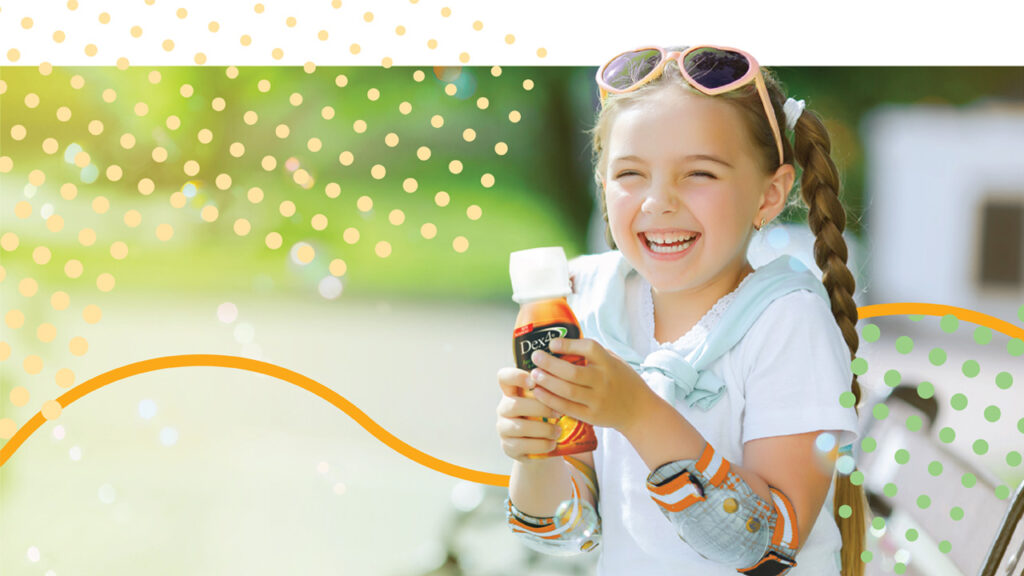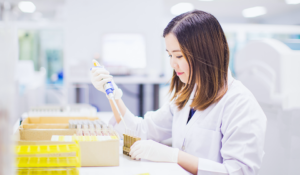
The following is sponsored content developed in partnership with AMG Medical

Low blood glucose—also known as hypoglycemia—can be one of the most challenging, stressful, and often scary parts of living with diabetes. Learning how to treat hypoglycemia is very important.
If you live with type 1 diabetes (T1D), you know that being prepared for low blood glucose emergencies with at least 15 grams of fast-acting carbohydrates is the goal, but there can be times when we find ourselves low and must use other foods.
There are many reasons why doctors and pharmacies might recommend glucose tabs over a bowl of ice cream when it comes to treating certain kinds of low blood glucose. While the fat and protein in the ice cream slow down the digestion of the sugar, the type of sugar in any carbohydrate source affects absorption too.
If you’ve ever wondered why a bowl of raspberries has a lower impact on blood glucose than the same amount of carbohydrates from a bowl of grapes, it’s all about the amount of glucose vs. fructose vs. sucrose.
Let’s look at these sugars and how they work:
GLUCOSE / DEXTROSE
Glucose—also known as dextrose— immediately raises blood glucose levels because it is already in the form of sugar your brain and cells recognize and require for energy, making it the most rapidly absorbed source of carbohydrates if experiencing hypoglycemia.
Some sources of 100% glucose include glucose tabs such as Dex4 tabs, glucose gel, and liquiblast.
FRUCTOSE
Fructose, or fruit sugar, is a simple sugar found naturally in many plants, where it is often bonded to glucose to form sucrose.
Some sources of fructose include fruit, fruit juice, honey, pasta, bread, veggies, and many processed foods and drinks such as sugary sodas.
Fructose on its own does not break down into glucose to raise your blood glucose levels. Instead, the liver metabolizes fructose, raising cholesterol and lipid levels. If you use an apple to treat low blood glucose, only a percentage of the carbohydrates in that apple will raise your blood glucose levels. Your body must also break down the fibrous apple for the sucrose and glucose it contains to reach your bloodstream.
SUCROSE
Sucrose is known as a “double sugar” or “disaccharide” because it’s made of equal parts of glucose and fructose.
Some sources of sucrose include white/brown sugar, maple syrup, jellybeans, gummy candies, and more processed candies/snacks.
This means half of the carbohydrates in a packet of white sugar will raise your blood sugar quickly and the other half will be metabolized by your liver.
THE BOTTOM LINE
Low blood glucose is a real part of living with diabetes—especially if you take insulin. Being prepared for low blood glucose levels comes down to having fast-acting carbohydrates in all the right places.
Keeping dried fruit or other snacks on hand is a smart idea, but having a more direct glucose source like concentrated gels or Dex4 tabs is a good option because they work quickly and are easy to store in your car, purse, nightstand, gym bag, desk, and winter coat – and they don’t freeze, melt or rot.
HOW TO USE GLUCOSE TABLETS
When your blood glucose drops below a target range (for most people, less than 4 mmol/L), it is considered low. Most glucose tablets contain 4 grams of carbs each and it’s typically recommended that you eat 4 tablets (16 carbs) while experiencing a low. Tabs can relieve hypoglycemia symptoms within 10 minutes, so you should check your blood glucose10-15 minutes after ingestion to ensure your levels are rising and you are back to a safe range.
NOTE: Tabs and gels are great for everyday safety for people with type 1 diabetes (T1D), but they should not be used if you or your loved one are having a severe reaction to low blood glucose or are losing consciousness. Carry emergency glucagon and always tell someone if you feel you might pass out.
Disclaimer: This post was prepared in partnership with AMG Medical – a Montreal-based distributor of quality Medical Supplies & Home Health Care products and a generous supporter of the Sun Life Walk to Cure Diabetes for JDRF over the last 20 years. Learn more about Dex4 fast-acting glucose.
There’s a lot to remember when you live with T1D. JDRF is here to support you, visit our website for more information on daily management and other resources breakthrought1d.ca/daily-management/ and connect with the T1D community as part of our new Facebook Group. facebook.com/groups/jdrft1dsupport



